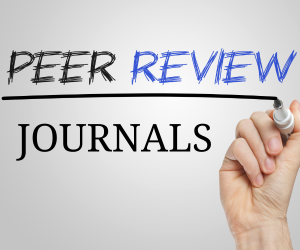THE EFFICACY AND SAFETY OF SILODOSIN FOR THE TREATMENT OF BENIGN HYPERPLASIA PROSTATE: A SYSTEMATIC REVIEW
DOI:
https://doi.org/10.53555/1wngd289Keywords:
BPH, silodosin, systematic reviewAbstract
Background: BPH is a prevalent and costly condition affecting the quality of life for older men. α adrenoceptor antagonists provide effective relief for bothersome symptoms but do not prevent the need for surgery or acute urinary obstruction. Silodosin, a newer α1 adrenoceptor antagonist, offers comparable symptom relief to tamulosin
Aim: This systematic review evaluates the efficacy and safety of silodosin for the treatment of benign prostatic hyperplasia (BPH) and its suitability for daily clinical practice..
Methods: This systematic review examined the use of silodosin in men with benign prostatic hyperplasia (BPH). Multiple databases were searched for relevant literature. (PubMed and Cochrane Library)
Results: This systematic review included four randomized trials involving 2504 patients with benign prostatic hyperplasia. The analysis showed that silodosin demonstrated significant improvements in International Prostate Symptom Score, specifically in storage and voiding symptoms, compared to placebo.
Conclusion: Silodosin shows efficacy and safety for treating benign prostatic hyperplasia (BPH), but the higher incidence of retrograde ejaculation warrants further high-quality, long-term studies, including direct comparisons with tamsulosin.
References
Hollingsworth JM, Wilt TJ. Lower urinary tract symptoms in men. BMJ. 2014;349:1–11.
Speer S. Benign Prostate Hyperplasia : epidemiology and economics. α1 adrenoceptor Antagon. 2017;(October):69– 88.
Foo KT. What is a disease? What is the disease clinical benign prostatic hyperplasia (BPH)? World J Urol [Internet] 2019;37(7):1293–6. Available from: https://doi.org/10.1007/s00345-019-02691-0
Foo KT. Solving the benign prostatic hyperplasia puzzle. Asian J Urol [Internet] 2016;3(1):6–9. Available from: http://dx.doi.org/10.1016/j.ajur.2015.11.003
Wang XH, Wang X, Shi MJ, Li S, Liu T, Zhang XH. Systematic review and meta-analysis on phosphodiesterase 5 inhibitors and α-adrenoceptor antagonists used alone or combined for treatment of LUTS due to BPH. Asian J Androl. 2015;17(6):1022–32.
Lepor H. Alpha-blockers for the Treatment of Benign Prostatic Hyperplasia. Urol Clin North Am [Internet] 2016;43(3):311–23. Available from: http://dx.doi.org/10.1016/j.ucl.2016.04.009
Rossi M, Roumeguère T. Silodosin in the treatment of benign prostatic hyperplasia. Drug Des Devel Ther. 2010;4:291–7.
Califano G, Ruvolo CC, Creta M, Capece M, La Rocca R, Celentano G, et al. Focus on silodosin: Pros and cons of uroselectivity. Res Reports Urol. 2020;12:669–72.
Pande S, Hazra A, Kundu AK. Evaluation of silodosin in comparison to tamsulosin in benign prostatic hyperplasia: A randomized controlled trial. Indian J Pharmacol. 2014;46(6):601–7.
Capitanio U, Salonia A, Briganti A, Montorsi F. Silodosin in the management of lower urinary tract symptoms as a result of benign prostatic hyperplasia: Who are the best candidates. Int J Clin Pract. 2013;67(6):544–51.
Yang SSD, Chang SJ. Re: Christopher R. Chapple, Francesco Montorsi, Teuvo L.J. Tammela, et al. Silodosin therapy for lower urinary tract symptoms in men with suspected benign prostatic hyperplasia: Results of an international, randomized, double-blind, placebo- and active-controlled clinical trial performed in Europe. Eur Urol 2011;59:34252. Eur Urol. 2011;60(2):98842007.
Yu HJ, Lin ATL, Yang SSD, Tsui KH, Wu HC, Cheng CL, et al. Non-inferiority of silodosin to tamsulosin in treating patients with lower urinary tract symptoms (LUTS) associated with benign prostatic hyperplasia (BPH). BJU Int. 2011;108(11):1843–8.
Villa L, Capogrosso P, Capitanio U, Martini A, Briganti A, Salonia A, et al. Silodosin: An Update on Efficacy, Safety and Clinical Indications in Urology. Adv Ther [Internet] 2019;36(1):1–18. Available from: https://doi.org/10.1007/s12325-018-0854-2
Yuan J, Liu Y, Yang Z, Qin X, Yang K, Mao C. The efficacy and safety of alpha-1 blockers for benign prostatic hyperplasia: An overview of 15 systematic reviews. Curr Med Res Opin. 2018;29(3):279–87.
Downloads
Published
Issue
Section
License

This work is licensed under a Creative Commons Attribution 4.0 International License.
You are free to:
- Share — copy and redistribute the material in any medium or format for any purpose, even commercially.
- Adapt — remix, transform, and build upon the material for any purpose, even commercially.
- The licensor cannot revoke these freedoms as long as you follow the license terms.
Under the following terms:
- Attribution — You must give appropriate credit , provide a link to the license, and indicate if changes were made . You may do so in any reasonable manner, but not in any way that suggests the licensor endorses you or your use.
- No additional restrictions — You may not apply legal terms or technological measures that legally restrict others from doing anything the license permits.
Notices:
You do not have to comply with the license for elements of the material in the public domain or where your use is permitted by an applicable exception or limitation .
No warranties are given. The license may not give you all of the permissions necessary for your intended use. For example, other rights such as publicity, privacy, or moral rights may limit how you use the material.







